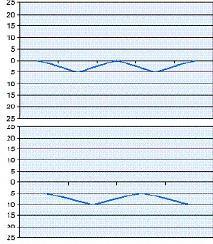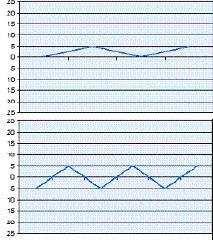Mechanical Ventilation 7th Edition Cairo Test Bank
Chapter 01: Basic Terms and Concepts of Mechanical Ventilation
Cairo: Pilbeam’s Mechanical Ventilation: Physiological and Clinical Applications, 7th Edition
MULTIPLE CHOICE
1. The body’s mechanism for conducting air in and out of the lungs is known as which of the following?
a. External respiration
b. Internal respiration
c. Spontaneous ventilation
d. Mechanical ventilation
ANS: C
The conduction of air in and out of the body is known as ventilation. Since the question asks for the body’s mechanism, this would be spontaneous ventilation. External respiration involves the exchange of oxygen (O2) and carbon dioxide (CO2) between the alveoli and the pulmonary capillaries. Internal respiration occurs at the cellular level and involves movement of oxygen from the systemic blood into the cells.
2. Which of the following are involved in external respiration?
a. Red blood cells and body cells
b. Scalenes and trapezius muscles
c. Alveoli and pulmonary capillaries
d. External oblique and transverse abdominal muscles
ANS: C
External respiration involves the exchange of oxygen and carbon dioxide (CO2) between the alveoli and the pulmonary capillaries. Internal respiration occurs at the cellular level and involves movement of oxygen from the systemic blood into the cells. Scalene and trapezius muscles are accessory muscles of inspiration. External oblique and transverse abdominal muscles are accessory muscles of expiration.
3. The graph that shows intrapleural pressure changes during normal spontaneous breathing is depicted by which of the following?
a. b.

d.

ANS: B
During spontaneous breathing, the intrapleural pressure drops from about 5 cm H2O at endexpiration to about 10 cm H2O at end-inspiration. The graph depicted for answer B shows that change from 5 cm H2O to 10 cm H2O.
4. During spontaneous inspiration alveolar pressure (PA) is about .
a. 1 cm H2O
b. +1 cm H2O
c. 0 cm H2O
d. 5 cm H2O
ANS: A
During normal spontaneous ventilation alveolar pressure will become 1 cm H2O which is the lowest. During the exhalation of a normal spontaneous breath the alveolar pressure will become +1 cm H2O.
5. The pressure required to maintain alveolar inflation is known as which of the following?
a. Transairway pressure (PTA)
b. Transthoracic pressure (PTT)
c. Transrespiratory pressure (PTR)
d. Transpulmonary pressure (PL)
ANS: D
The definition of transpulmonary pressure (PL) is the pressure required to maintain alveolar inflation. Transairway pressure (PTA) is the pressure gradient required to produce airflow in the conducting tubes. Transrespiratory pressure (PTR) is the pressure to inflate the lungs and airways during positive-pressure ventilation. Transthoracic pressure (PTT) represents the pressure required to expand or contract the lungs and the chest wall at the same time.
6. Calculate the pressure needed to overcome airway resistance during positive-pressure ventilation when the proximal airway pressure (Pawo) is 35 cm H2O and the alveolar pressure (PA) is 5 cm H2O.
a. 7 cm H2O
b. 30 cm H2O
c. 40 cm H2O
d. 175 cm H2O
ANS: B
The transairway pressure (PTA) is used to calculate the pressure required to overcome airway resistance during mechanical ventilation. This formula is PTA = Pawo PA.
7. The term used to describe the tendency of a structure to return to its original form after being stretched or acted on by an outside force is which of the following?
a. Elastance
b. Compliance
c. Viscous resistance
d. Distending pressure
ANS: A
The elastance of a structure is the tendency of that structure to return to its original shape after being stretched. The more elastance a structure has, the more difficult it is to stretch. The compliance of a structure is the ease with which the structure distends or stretches. Compliance is the opposite of elastance. Viscous resistance is the opposition to movement offered by adjacent structures such as the lungs and their adjacent organs. Distending pressure is pressure required to maintain inflation, for example, alveolar distending pressure.
8. Calculate the pressure required to achieve a tidal volume of 400 mL for an intubated patient with a respiratory system compliance of 15 mL/cm H2O.
a. 6 cm H2O
b. 26.7 cm H2O
c. 37.5 cm H2O
d. 41.5 cm H2O
ANS: B
C = V/P then P = V/C
9. Which of the following conditions causes pulmonary compliance to increase?
a. Asthma
b. Kyphoscoliosis
c. Emphysema
d. Acute respiratory distress syndrome (ARDS)
ANS: C
Emphysema causes an increase in pulmonary compliance, whereas ARDS and kyphoscoliosis cause decreases in pulmonary compliance. Asthma attacks cause increase in airway resistance.
10. Calculate the effective static compliance (Cs) given the following information about a patient receiving mechanical ventilation: peak inspiratory pressure (PIP) is 56 cm H2O, plateau pressure (Pplat) is 40 cm H2O, exhaled tidal volume (VT) is 650 mL, and positive endexpiratory pressure (PEEP) is 10 cm H2O.
a. 14.1 mL/cm H2O
b. 16.3 mL/cm H2O
c. 21.7 mL/cm H2O
d. 40.6 mL/cm H2O
ANS: C
The formula for calculating effective static compliance is Cs = VT/(Pplat EEP).
CLICK THE LINK BELOW TO ACCESS THIS PAPER
https://www.leakedexams.com/item/69373/test-bank-for-pilbeamsmechanical-ventilation-physiological-and-clinical-applications-7th-edition-bycairo
